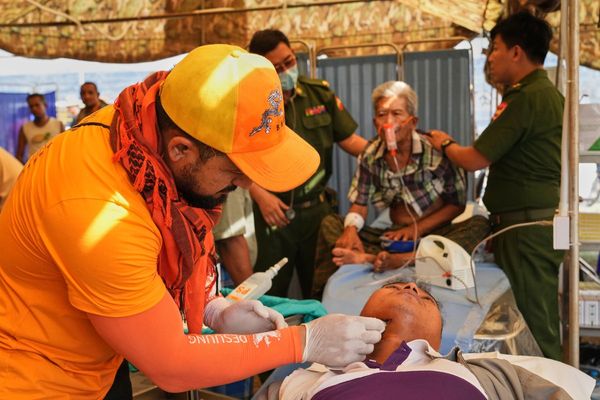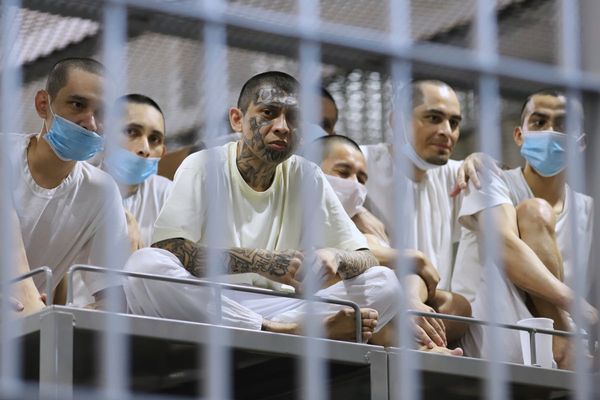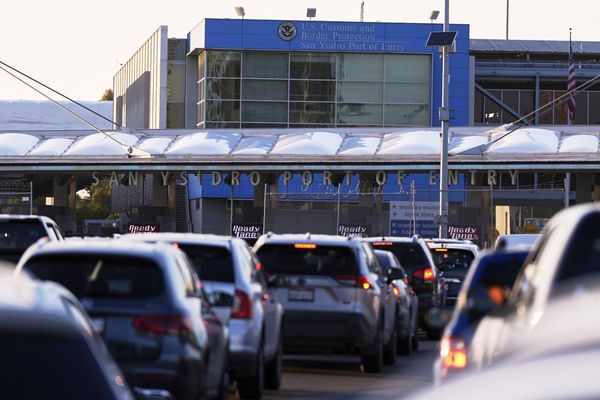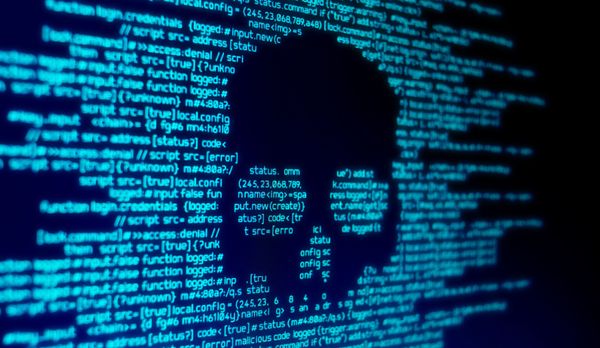CoronaCheck is RMIT ABC Fact Check's weekly email newsletter dedicated to fighting the misinformation infodemic surrounding the coronavirus outbreak.
You can read the latest edition below, and subscribe to have the next newsletter delivered straight to your inbox.
CoronaCheck #102
This week, we look at fresh claims that mRNA vaccines put your genes at risk, and bring you the latest on the coronavirus "lab leak" theory.
Meanwhile, as the war in Ukraine spills over into the realm of mis- and disinformation, we launch a new section looking at the facts and falsehoods surrounding the conflict.
And make sure to read to the bottom for some crocodile-related debunking.
No, mRNA jabs aren't 'genotoxic'
Claims that COVID-19 jabs can alter human DNA resurfaced this week as vaccine sceptics across social media seized upon the results of a new study to suggest that people receiving the vaccine risked changing or even poisoning their genes.
"YES THE ‘VACCINE' ALTERS YOUR DNA," read one post in a popular conspiracy forum, viewed more than 30,000 times.
Former TV chef Pete Evans also used his Telegram channel to announce that "mRNA could alter human DNA!", while also sharing an edited extract from the study that suggested this process may "potentially mediate GENOTOXIC SIDE EFFECTS".
So, should you be worried?
Not according to three experts consulted by Fact Check, who separately described the latest study as "regrettably weak", "[not] very robust" and "very limited" in its findings.
Published by academics in Sweden, the study purports to show that the "messenger" RNA at the heart of Pfizer's COVID-19 vaccine can be converted to DNA inside a human cell via "reverse transcription".
This is a process whereby RNA (itself a product of DNA) creates DNA. However, inserting that DNA into our genome requires a secondary process called "retrotransposition", which, as experts writing in The Conversation have explained, is exceedingly rare.
According to a fact sheet written by the US Centres for Disease Control and Prevention, the genetic material contained in mRNA vaccines "never enters the nucleus [centre] of your cells, which is where your DNA is kept".
Claims of mRNA vaccines altering human DNA have persisted throughout the pandemic, despite being debunked by fact checkers at Reuters, PolitiFact and AFP.
As for the latest study, Traude Beilharz, an associate professor and RNA biologist at Monash University, told Fact Check that "the level of evidence [it provides] for reverse-transcription is low, [while] the evidence for genome integration is non-existent".
She said that if the vaccine had triggered the retrotransposition process "then the other [approximately] 10,000 mRNAs within the cell should be ending up in the genome too".
"But that simply doesn't happen," she added, explaining that human cells have "myriad mechanisms" to prevent it, and that there were "many experimental tests available to researchers to detect even vanishingly rare retrotransposition events".
Even so, the authors wrote that they did "not know if DNA reverse transcribed from [the Pfizer vaccine] is integrated into the cell genome".
In an email to Fact Check, Archa Fox, an associate professor at the University of Western Australia's School of Molecular Sciences, noted several issues with the design of the study, including that it relied on an artificially high dose of the vaccine.
But in any event, "the fact that something is found in DNA format is neither here nor there … [without proving] it was integrated into the genome", she said.
Stephen Turner, head of Monash University's Department of Microbiology, also raised concerns about the concentrated dose tested, along with the absence of controls for the study's use of cultured cells, which he said "don't represent the tissues of our body".
"So to use it as evidence that these things change … or get incorporated into our DNA, is presumptive at best, misleading at worst," he said.
The latest on the 'lab leak' theory
A pair of new studies analysing the origins of the coronavirus pandemic has sparked a fresh wave of debate about whether the initial spread of COVID-19 could be pinned to a live animal market or to a leak from the Wuhan Institute of Virology, which is housed in the city in which the first cases of the disease were reported in December 2019.
While the studies found the virus most likely spilled over into humans at the Huanan Seafood Wholesale Market in 2019, a number of commentators from conservative US news outlets, as well as from anti-Chinese Communist Party (CCP) publications, took to social media to suggest otherwise.
"This ‘Wuhan market' just happened to be near one of the world's few Biosafety Level 4 labs in a Communist Chinese country that lied about the pandemic while it spread around the world," tweeted Kyle Becker, the CEO and chief editor of his eponymous conservative news website. "We're not buying this CCP disinformation."
With this renewed interest in the lab leak theory in mind, here's what we know — or don't know — about the beginnings of the pandemic.
According to the New York Times, the two new studies (which have yet to be published in any journal requiring peer review) analysed a wide range of data, including maps of market stalls, the activities of people infected early in the outbreak and virus genes, in order to conclude that the coronavirus was "very likely present in live mammals sold at the Huanan Seafood Wholesale Market in late 2019".
"[The studies] suggested that the virus spilled over into people working or shopping there on two separate occasions," the Times reported.
Michael Worobey, a co-author of both studies who had previously expressed a desire for greater consideration of the lab leak theory, told the Times: "When you look at all of the evidence together, it's an extraordinarily clear picture that the pandemic started at the Huanan market."
An evolutionary biologist at the University of Arizona, Dr Worobey had signed a letter calling for further investigation into the lab leak theory following the March 2021 findings of World Health Organisation researchers which suggested such a scenario was "extremely unlikely".
But while Dr Worobey's mind may now be made up, other experts, including the author of the letter signed by Dr Worobey, disagreed over the certainty of the findings.
However, an Australian co-author of the new studies has called on such doubters to provide evidence for a lab leak, something he claims they cannot do.
"There's not one of these people who believe in the lab leak who can explain how you get that pattern if it came out of a lab," Eddie Holmes, an evolutionary scientist from Sydney University, told the Australian Financial Review.
"What's the evidence for the market? I think that's actually very strong. Is there any evidence for the lab? I think that's just non-existent."
But it's unlikely the argument will be settled any time soon, with yet another academic paper fuelling speculation among some lab leak theorists that SARS-CoV-2 was man-made.
Published on February 21, the article (which was not a full study) found that a 19-letter sequence of genetic code contained in the virus also appeared in a gene related to cancer treatment, patented by Moderna more than three years before the pandemic.
The odds of such a match randomly occurring were roughly one in 3 trillion, the authors said, suggesting that while it "could be a random coincidence, other possibilities merit consideration".
However, researchers at the Washington University-affiliated Bloom Lab have dismissed the significance of the findings, arguing that the open access database of genetic sequences GenBank contains 6 trillion samples.
"If a 19-nucleotide sequence is searched against a database of one other sequence, it's surprising if [they] match. If it's searched against 6-trillion nucleotides of sequence, you expect to get a few matches by chance," the lab tweeted.
Another expert quoted by industry news website BioSpace similarly argued that the type of searches used by the researchers "can always find matches", and labelled the findings a "quirky observation" rather than a "smoking gun".
"It doesn't get us any further with the debate about whether COVID was engineered."
Meanwhile, other researchers say they may have found evidence to show the same stretch of code can be found in nature, for example, in the chimney swift bird, in certain types of bacteria and in a human protein involved in DNA repair.
From Ukraine
A week into Russia's invasion of Ukraine, the deluge of misinformation and disinformation about the conflict shows no sign of easing.
Indeed, signatories of the International Fact-Checking Network (IFCN) have now published more than 750 fact checks about the crisis, from in-depth explainers on Russian disinformation to hundreds of debunks of old images and videos being shared out of context.
Particularly impressive have been the efforts of Ukrainian fact checkers at Stop Fake and Vox Ukraine, who have been publishing from within the war zone, using their direct knowledge of the situation on the ground to stamp out incorrect information.
In an article published this week, RMIT ABC Fact Check outlined the types of misinformation being shared, and via which platforms, as well as the key sources of misinformation and disinformation.
According to experts, much of the bad information relates to old images and videos being reposted to platforms out of context and mislabelled.
Russian disinformation (that is, incorrect or misleading information shared with ill intent) has also been prevalent, starting with President Vladmir Putin's stated reasons for the invasion, which have been underpinned by myths about Ukrainian nationhood and the treatment of ethnic Russians there.
As for what can be done to stem the tide of dodgy wartime information, the article offers tips for at-home fact checking, as well as the best places to source up-to-date fact checks.
In other news: Fake crocodile sparks panic in Queensland
As record-breaking floods wreaked havoc across Queensland and NSW, national park authorities were forced to debunk rumours of an escaped crocodile lurking in the floodwaters of the Gold Coast.
"My home town is under water," read a Facebook post, which was later deleted.
"And to make matters worse there's a crocodile on the loose that escaped from the Gold Coast and is making its way down to Cabriata [sic] Beach."
The claim of a crocodile at large appears to have originated from a viral image shared across social media purporting to show a "big croc" in floodwaters following an escape from the David Fleay Wildlife Park in Burleigh Heads on Queensland's Gold Coast.
"Be careful because it's made its way [to] Tallebudgera," a caption reads.
According to the Queensland Department of Environment and Science, the viral image caused emergency services to be "inundated" with calls relating to the supposed croc escape, drawing their attention away from the life-threatening flood emergency.
Queensland Parks, which manages the David Fleay Wildlife Park, soon took to Instagram to debunk the claim, telling followers: "We can confirm this is completely untrue — our freshwater crocs are both safe and accounted for, and are NOT on the loose in Burleigh/Tallebudgera flood water."
"Our saltwater crocs, Mojo and Madonna, are enjoying a holiday up at Australia Zoo, and we've also confirmed all crocodiles at Currumbin Wildlife sanctuary are also present and accounted for.
"The image in question is believed to either be photoshopped or of a model/toy crocodile similar to a previous hoax sighting in the Maroochy River a few years ago."
Craig Franklin, of Queensland University's School of Biological Science, agreed, telling Fact Check: "From the photo, and the lack of other reliable sightings, I would be almost 100 per cent confident that this a fake."
According to the Department of Environment and Science, crocodile populations are normally found further north in the state and would not typically venture as far south as the Gold Coast.
Videos later posted on Tik Tok and Instagram also appear to show the creators of the image revealing the incident as a "little prank" involving a fibreglass crocodile.
Despite this false alarm, keepers at the Australian Reptile Park on the NSW central coast were last week forced to perform a risky rescue operation when floodwaters allowed a large alligator to breach an internal fence.
Edited by Ellen McCutchan
Got a fact that needs checking? Tweet us @ABCFactCheck or send us an email at factcheck@rmit.edu.au







